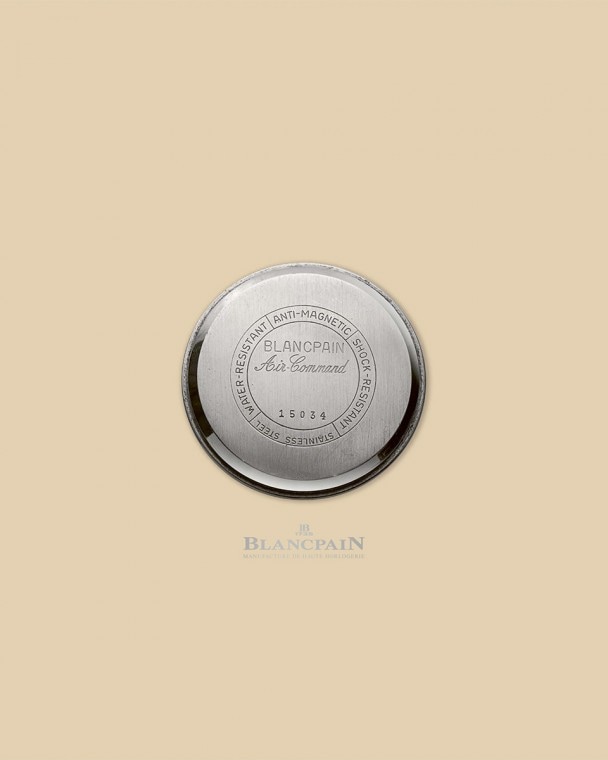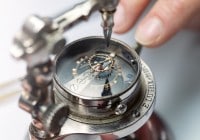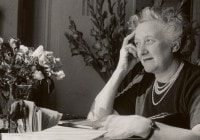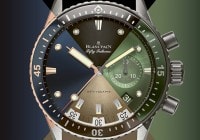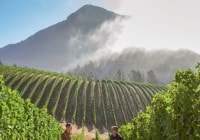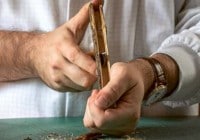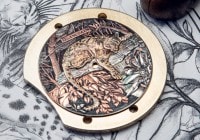
Search in Issues
Chapters
List of parts
Chapter 10
Martín BERASATEGUI
An interview with Michelin twelve-star chef Martín Berasategui.
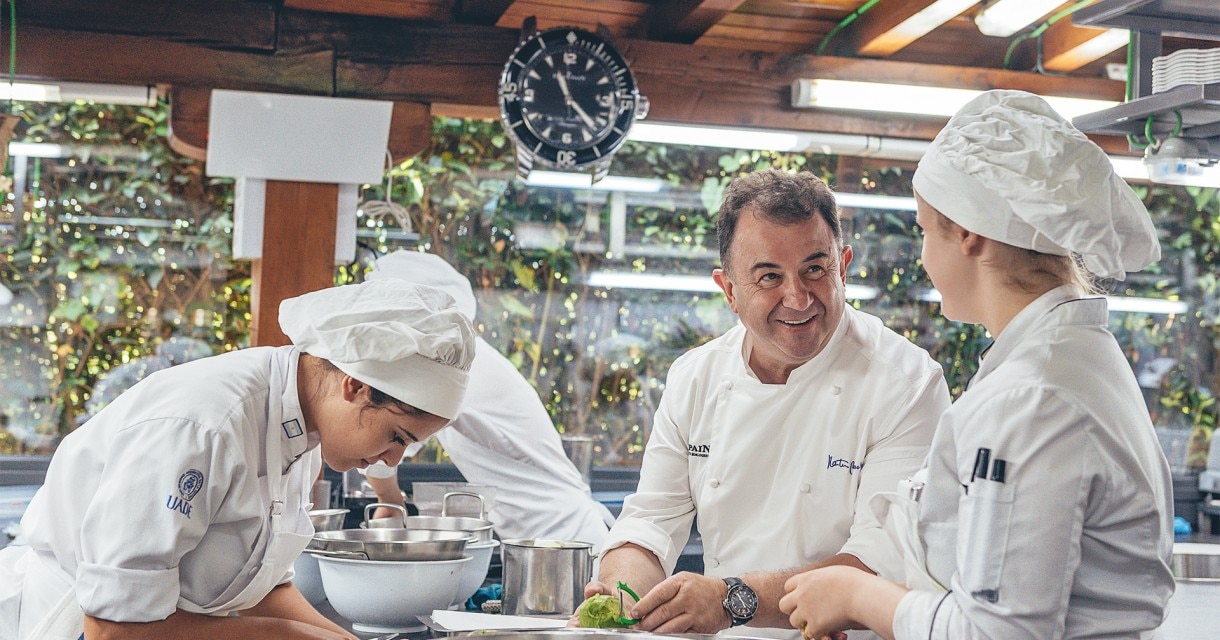

Martín Berasategui in the kitchen of his Lasarte restaurant, sporting his Blancpain Fifty Fathoms.
Martín Berasategui (1960) uses fire as a means of communication and creates unique staging. Within each offering, he expresses exaggeration, prudence and moderation, roundness, explosive flavour or subtle fragrance in preparations that adhere to the dish like a fine, delicate film of colour and volume.
MB: I was born in Calle General Echagüe, near the Old Part of San Sebastian. My parents owned a popular restaurant, Bodegón Alejandro, which is basically where we spent all our time. I used to go there as soon as I got out of school, as well as having lunch and dinner there with my mother and aunt, and only going home to sleep.
DJ: A magical place for you?
MB: Absolutely: we played, listened to the grown-ups and learned what life is really like. It was my little private university because I encountered a vast swathe of Basque popular culture and society there. My father was a butcher who was passionate about local produce and knew how to surround himself with people who shared his tastes. However, he didn’t like cooking and he was always in the dining room of the restaurant, where he knew how to create a good atmosphere. At one table there were popular poets. At another, you would see basque pelota players, fishmongers, bakers, students or high school teachers, all eager to enjoy their meal. There were also players from the Real Sociedad, the town’s premier football team. It was a unique place, with a concentration of characters impossible to achieve today. My mother Gabriela and my aunt Maria were constantly on the move between the kitchen and the dining room, serving customers and taking care of us. I appreciated their presence.
DJ: I imagine that your culinary apprenticeship went beyond what you learned from them?
MB: When I was 17, I met a rower in the French national rowing team named Laurent Irazusta, whose job was to sell kitchen equipment. When I asked him if he knew people in the hotel business, he replied that he was in the process of equipping a pastry shop in France. This contact helped me begin my apprenticeship in the establishment of Jean Paul Heinard and I also subsequently met and worked for André Mandion. These connections in turn led me to become acquainted with other professionals such as Daniel Giraud. I later explored the world of charcuterie with François Brouchican who I accompanied to various events and with whom I felt very comfortable: when he wanted to pay me, I instead requested a chance to visit a restaurant recently opened by one of his friends. This was the Pain, Adour et Fantaisie establishment run by Didier Oudill, a former head chef of Michel Guérard. That encounter definitely influenced my way of cooking – and as far as Basque chefs are concerned, Hilario Arbelaitz from Zuberoa d’Oiartzun is the chef who made the greatest impression on me. We are still great friends.
DJ: Has your initial training as a pastry chef left any traces?
MB: Definitely. Pastry chefs leave little room for improvisation, they tend to calculate everything. When you decide to make something, you experiment with it during the creation process; but when you’ve found what you’re looking for, you record the weights and the development processes. Personally, I still write everything down, and I have a multitude of notebooks to which I refer. As a result, my team understands exactly what I want.
DJ: You are younger than the other chefs of the Nueva Cocina Vasca1 movement. How did you come to join them?
MB: I was 19 years younger than Juan Mari Arzak and 12 years younger than the rest of the group and I had a lot of energy. I had decided to be a chef and nobody was going to stop me. The Bodegón was always full and represented a real marathon for everyone involved, including for me and others working in the kitchen. I became accustomed to the discipline of serving everyone at all hours and I loved my job. As I always expect a lot from myself, I decided that I would be the best I could in my chosen career. I was very proud of what my parents had accomplished, yet I felt compelled to go further. Taking it one step at a time, I set off to learn more. Brimming with energy, I was perpetually driven to improve, like an athlete constantly seeking to excel. I set up a bed under the stairs of the Bodegón and woke up at dawn to go and study across the border in France. I was very determined and had been trained to cope with tough standards by the family restaurant in which I had been raised.
¹ This is a movement that emerged in the 1980s, renewing Basque cuisine and laying the foundations for a subsequent renewal that gradually spread throughout Spain.
THE WATCHMAKING ART AND ART DE VIVRE: The same tradition of excellence
At first blush, it might seem that gastronomy and fine watchmaking would exist worlds apart. However, four decades of strong alliances between Blancpain and the most celebrated lights in cooking have not only proven the contrary, they have illuminated the common ground between these two universes.
Consider the cavalcade of luminaries who have joined us on these pages – and some in cookbooks – over these nearly five decades: Fredy Girardet (one of two Chefs of the Century named by Gault & Millau), Joël Robuchon (the other Chef of the Century), Marc Haeberlin, Michel Troisgros, Guy Savoy, Philippe Rochat, Benoit Violier, Jacques Lameloise, Eric Pras, Michel Rostang, Anne-Sophie Pic, Arnaud Lallement, Daniel Humm, Gerard Rabaey, Philippe Chevrier, Stephan Decotterd, Antonio and Nadia Santini, Edgard Bovier, Geert Vanhecke, Yoshihiro Takahashi, Dong Zhenxiang and Chan Yan Tak. Adding to this list of Michelin stars, more than 100 in number, has been Blancpain’s support for many years of the Bocuse d’Or, the most prestigious cooking contest in the world, and The Michelin Guide itself.
What explains this affinity between fine watchmaking and gastronomy? Many elements actually. Both domains are obsessed by their relentless quests for perfection, attention to the most minute details, devotion to craft, artistic flair, and appreciation for art de vivre. In all these dimensions there are shared values and from there grow mutual understanding and respect.
In this Blancpain recognizes another towering talent from the world of fine cooking, Michelin twelve-star chef Martín Berasategui himself a long time Blancpain collector. As we look forward to the reopening of Chef Berasategui’s flagship restaurant Lasarte-Oria (Gipuzkoa) and other beloved restaurants around the world, we offer an exclusive interview with the Chef conducted by Spanish television personality David de Jorge.

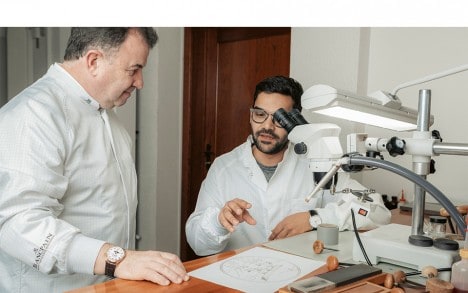
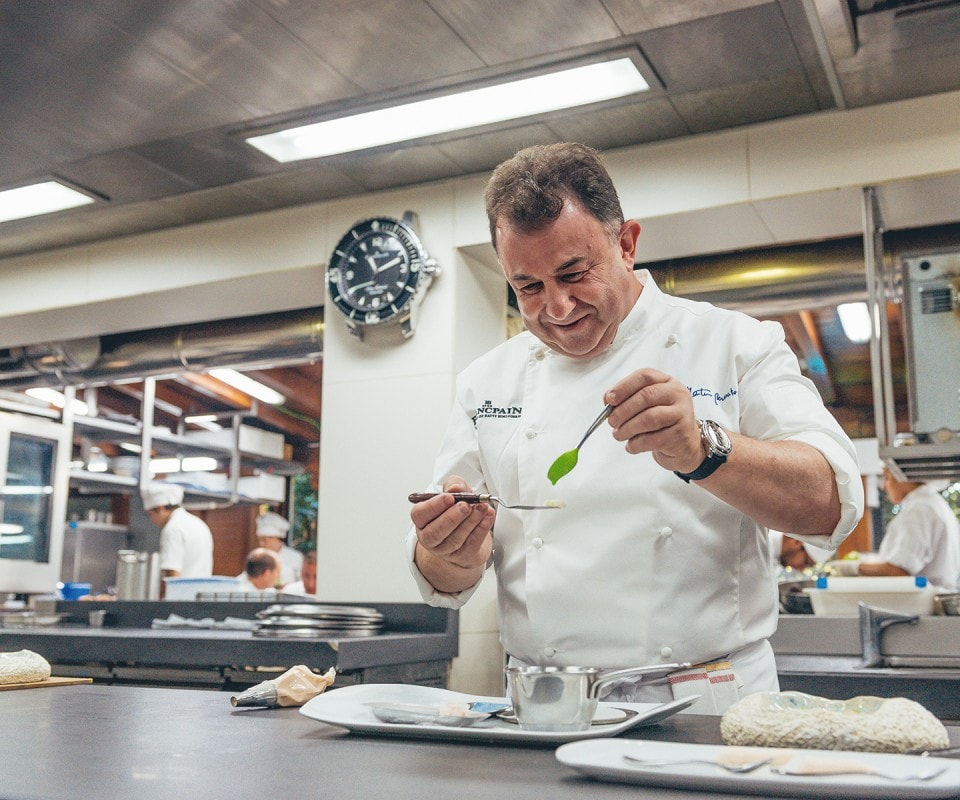
If a guest is satisfied with what I offer, THEN I AM TOO.
DJ: You then took the helm of the family business?
MB: When I was 21, I told my parents and my aunt that I wouldn’t be worthy of staying with them if I didn’t feel I could take over the business. They agreed and helped me as much as they could, which was a huge opportunity for me. I started by renovating the kitchen in which the person who is now my wife, Oneka Arregi, worked alongside me. Not many people know – because everyone is accustomed to seeing her running the dining room in our restaurant in Lasarte – that we were both hard at it at the stoves when we realised how important it was to take care of the dining room. Everything had to be carefully thought out down to the last detail and renovated in a contemporary style, so as to reflect what we were offering. I went to the bank to ask for a loan and, given my young age, I was told that there would be no problem if I brought a document showing that my parents would serve as guarantors. I replied that I didn’t want to bother them, that they were retired, that it was my business and it was up to me to take care of everything. When I left, I was fed up with everyone. I felt like I was sinking before I had even started. It was at that point that Eusebio, a shepherd from Igueldo who supplied us with sheep’s milk, tomatoes and lettuce and who has since died, heard me complaining and vouched for me. He went with me to the bank and ordered the manager to give me what I needed. My mother didn’t find out until years later.
DJ: So that’s how you got started?
MB: Yes. A little while later, when I was 24 years old, we got our first star in the Michelin Guide. It was a surprise because the Bodegón was still in the basement and a star had never yet been awarded to an establishment one had to enter by going down 28 steps. The place had its limitations, but the star gave us great confidence.
DJ: Was it then that you joined the chef movement?
MB: No, not then. The chefs in question were role models for me because they had done an excellent job of bringing dignity to our profession. Becoming part of that came a little later. At that time, I modelled myself on Luis Irizar, the mentor who taught me that to be a good cook you have to love the profession with a passion, to be consistent and be capable of enduring a lot of suffering. When everyone is celebrating, you work as if you were celebrating yourself. This description of the job corresponded to my parents’ way of working. The Jornadas Gastronomicás at the Zaldiarán restaurant in Vitoria-Gasteiz was subsequently the starting point for everything that happened to me afterwards. I introduced myself as a young chef and I was very successful. Newspapers ran headlines such as ‘The triumph of Berasategui’ and other such favourable comments. This was the beginning of my public career, even though I experienced it as an extension of my vocation, because I consider that the most important thing in the life of a cook is to build knowledge on a solid foundation. It was at that time that I met Alain Ducasse who was not as internationally renowned as he is today. He was staying at the Grand Hotel in Saint-Jean-de-Luz and he used to come for lunch at my place, which led to us becoming friends.
D.J. So we’re back to the French connection!
MB: I actually view cuisine as an accumulation of varied experiences, a construction that is built on solid personal foundations. As I said before, in the end, it’s how hard you work that counts: you have to achieve what you have in mind even if that means making sacrifices and climbing an endless staircase. And I owe a lot to my French experience.
DJ : Do you see things in the same way today?
MB: Totally. You have to climb all the steps, one by one. I have been in the business for 46 years and today I have to do what is right for me. For example, through my test bench, I intend to leave a good number of new recipes as a legacy. These are my special grains on the sandy beach of new formulations. It has little to do with what I did a long time ago, nor indeed with what I offered in my restaurant just two years ago. That being said, if truth be told, everything flows from what came before and is merely a logical evolution. It’s inevitable. I have now acquired wide experience and cooperate with large and magnificent teams enabling me to work surrounded by kindred spirits.
Recipes OLIVES SEASONED OUR WAY
Ingredients for the olive filling:
1 l “Agrucapers” green olive sauce
1 l tomato water
13 g xanthan gum
Mix the ingredients and blend in a mixer.
Strain through a fine sieve.
Remove the air with a vacuum machine.
Fill olive-shaped silicone moulds to the brim with the mixture.
Place in the freezer. Set aside.
Ingredients for the olive butter:
1 kg “Pacari” cocoa butter
150 g freeze-dried olive paste
Melt the butter at 90°C, add the freeze-dried olive paste.
Blend in a mixer.
Strain through a sieve.
Coating the olives:
Turn out the frozen olives.
Place nine spikes (10 cm long for easy dipping) in polystyrene moulds of about 15x15 cm.
Prick a frozen olive on each spike by the curved side.
Once the olives have been pricked, place them in the freezer for 10-15 minutes so that they stick well.
Then place the other half of the frozen olive on the flat side of each spike and attach it to the other half.
Put them back in the freezer and leave them for 10-15 minutes so that they stick well and do not slip during the dipping process.
After this operation, heat the olive butter to 85 °C in a pan large enough to accommodate the nine frozen olives.
Remove any impurities and allow the butter to foam before starting the dipping process.
Take the mould by hand and immerse the olives completely. Immediately remove, turn the pan upside down and shake off the excess butter on a table.
With a small knife, quickly remove the drop that has formed, before it solidifies.
Place on greaseproof paper in a tray and leave to thaw in the fridge.
Ingredients for the olive juice:
0.5 l Agrucapers green olive sauce
1.5 l tomato water
4 g xanthan gum
Strain the olive sauce through cheesecloth. Mix the filtered liquid with the tomato water. Add xanthan gum to thicken.
Chill the mixture.
Garnishing and presentation
Pour 15 ml of olive juice into the bottom of a bowl and place the reconstituted olives from the refrigerator on top. Decorate with a green shoot. Serve with thin slices of black olive bread.

My best attribute is my palate and the companionship offered by my teams. WHEN WE LOVE SOMETHING, SO DO OUR CLIENTS.
DJ: What is the ultimate purpose of all that?
MB: To be even happier. There are certain problems that can never be resolved if approached from a purely economic standpoint. The better the food, the more satisfied you are. When a customer appreciates my tasting menu, I know right away that I have good reason to be happy. If a guest is satisfied with what I offer, then I am too. This is my life and my way of doing business. I don’t just repeat what I did the year before. Whether I host someone from America, Asia, Oceania or elsewhere, or a young couple who have saved up to treat themselves to a feast, I like to offer them what I stand for today, not a reflection of who I was many years ago.
DJ: How do you manage that?
MB: It’s important to have loyal guests, but at the end of the day I have a major asset: my palate, which never fails me. If someone were to ask me what I see as my greatest quality, I wouldn’t say that I’m a great worker, that I have a long career or something like that. My best attribute is my palate and the companionship offered by my teams. When we love something, so do our clients.
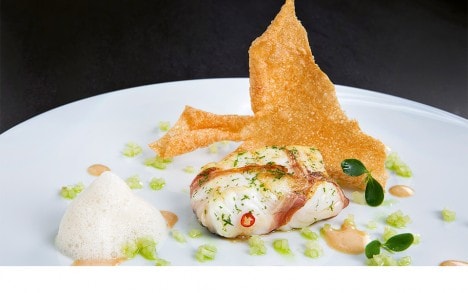
Taco de merluza enrollado en cenizas de papada ibérica, granos de hinojo y begi haundi líquido.
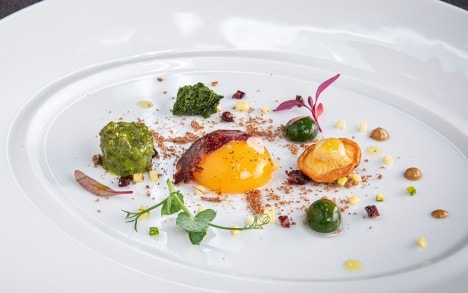
Infusión de setas marinadas con yema de huevo y migas crujientes de hierbas.
DJ: What do you personally love to eat?
MB: I love extraordinary products, such as Iberian ham or hake kokotxas for example. There are many ways of preparing these, but I prefer a traditional form, candied, in sauce or breaded. I also like vegetables. Suckling lamb delights my tastebuds, and wild turbot is just incredible! Seasonal leeks, snow peas, Pocha beans or tender butter beans, squid in ink sauce, stewed game...
DJ: How have you felt about the awards you’ve received?
MB: In 2001, when I learned that we had been awarded the third Michelin star, we were at the kitchen table. I was stunned and after that I didn’t sleep a wink. I went out at dawn and I walked around San Sebastian twice, all alone. Professionally, you can’t ask for more. From a personal point of view, I was particularly touched by the “Golden Drum” awarded by my city in 2005. San Sebastian is the most beautiful city in the world, in which I was born and grew up, where my family and friends live. To be named its best ambassador is some - thing you can’t describe in words .
DJ: What do you think about the fact that a chef is considered an artist?
MB: A cook is a cook. If some people choose to consider cuisine as an art, I can respect that point of view, but personally it doesn’t interest me and I don’t waste time thinking about it. I am very proud of my profession and I don’t need to be an architect, sculptor, painter, crafter of textures or a bagpipe player. I leave that to others. I don my apron every morning and I’m happy that way.
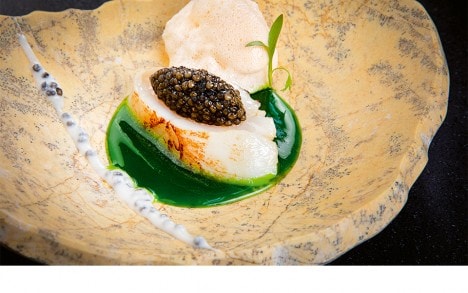
Vieira con caviar «Ars Italica» sobre un fondo de clorofila de perejil y cebollino.

Limón con jugo de albahaca, judía verde y almendra.
DJ: What about produce and suppliers?
MB: Produce is the first thing with which a cook must concern himself. I demand vegetables of exceptional quality, which you don’t usually find in markets. I have specialised suppliers who deliver what I need. It’s important to go and visit produc - ers and observe with them exactly how nature works. They know a lot about their business and there are no better advisors. You have to be extremely attentive to get the best out of everything. Our first task is to strive for excellence unremittingly. My restaurant is no ordinary place. People come to it to taste extraordinary dishes, so I need above-average produce.
DJ: Would you therefore say that your cuisine is produce-based?
MB: Very much so. For example, we need to evolve in step with the beautiful apples of the surrounding area, along with everything else that our farmers cultivate so lovingly.
DJ: How would you define Basque cuisine?
MB: It is all about produce and certain forms of know-how. As soon as you taste something, you realise whether it is very Basque or not at all. I can’t really explain that. It’s about memories, senses, smells, our temperament and the mysterious charm of this place. Every time I come back from a trip abroad, I realise that this land has a singular fragrance. I suppose that someone from elsewhere could say the same thing: I immediately recognise our distinctiveness, in every respect.
DJ: By way of conclusion, how do you see the future?
MB: Cooking is my thing and will continue to be so. My vocation as a chef is my priority and my current infrastructure enables me to continue as I see fit. Nowadays, chefs are in great demand and I enjoy advising multinationals or private investors on the management of their projects. In a way, we are generators of new ideas. As such, I like to represent the major brands that I consider to be soul mates, just like my friends at Blancpain. However, I essentially stick to my profession and the pursuit of my vocation. What keeps me smiling is the fact that I am a cook, and I am very much looking forward to doing better than I did yesterday. Life happens… and while this period is undoubtedly proving pretty rough, I am still very positive and hopeful for the future, which lies in continuing to enjoy life with my wife Oneka, my daughter Ane and my son-in-law José by my side.
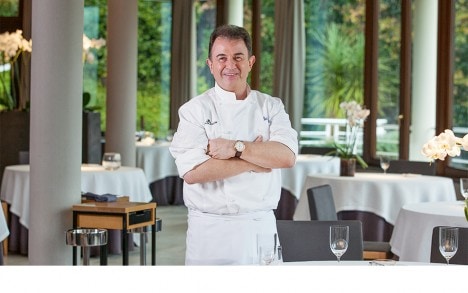
Martín in the dining rooms of his restaurant in Lasarte, wearing his Blancpain Villeret watch.
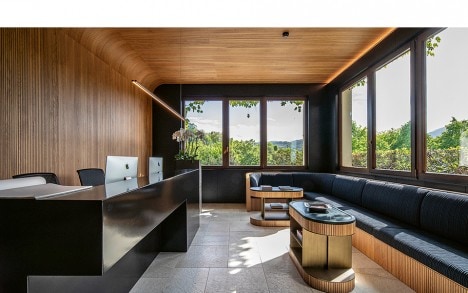
The reception area of Martín Berasategui's restaurant in Lasarte.
|
PUBLISHER EDITORIAL COMMITTEE PROJECT MANAGEMENT EDITORS IN CHIEF CONTRIBUTORS TO THIS ISSUE TRANSLATION PROOFREADING |
GRAPHIC DESIGN. LAYOUT ART DIRECTION PHOTOLITHOGRAPHY WATCH PHOTOGRAPHY OTHER PHOTOGRAPHY, ILLUSTRATIONS Release date: September 2021
|
